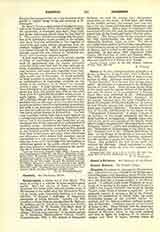

Camerino (CAMERINUM), Diocese of (CAMERINENSIS). Camerino is a city situated in the Italian province of Macerata in the Apennines, about 40 miles from Ancona. When the Exarchate of Ravenna was donated to the Holy See, it became subject to the Roman pontiff. It suffered much under Frederick II on account of its loyalty to the pope; Manfred besieged it (1262?), but happily Camerino was saved by Gentile Varano, under whom it became a papal fief. In the sixteenth century it became a fief of the Farnesi. During the persecution of Decius (249), the priest Porphyrius, master of the youthful martyr Venantius, and the Bishop Leontius suffered martyrdom at Camerino. Gerontius appears at the Council of Rome in 464. Other bishops were St. Ansovinus (816); Alberto degli Alberti (1437), prominent at the Council of Florence, where he was made cardinal and sent as legate by Eugenius IV to Alfonso of Aragon and Rene of Anjou, between whom he brought about a peace; Agapito Rufo (1465), of whom Pius II said “that it was doubtful if there ever was a more joyous poet or a more illustrious orator”—he was also a prudent and zealous pastor; Berardo Buongiovanni (1537), legate in Poland and present at the Council of Trent, where he gave proof of great erudition; Alfonso Binarino (1547) and Girolamo Bobo (1580), who distinguished themselves by their zeal for reform; Innocenzo del Bufalo (1601), legate to Henry II of France. In the last century the local university was widely known. Camerino was the cradle of the Capuchin Order. The famous medieval Abbey of Fiastra is now abandoned. The diocese contains 182 parishes, 45,900 inhabitants, 13 religious orders of men and 13 of women.
U. BENIGNI

